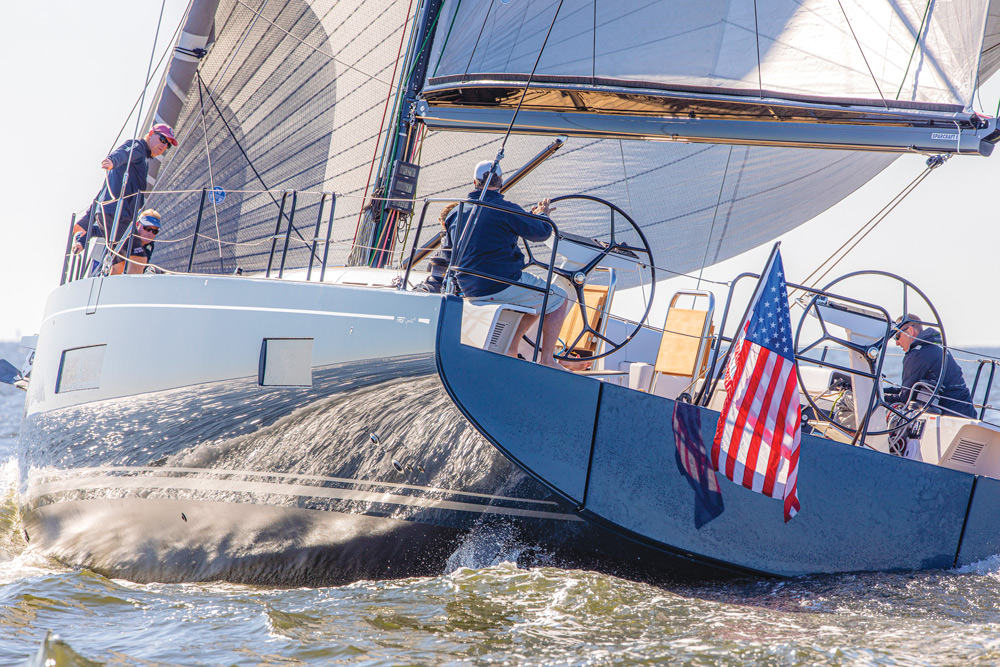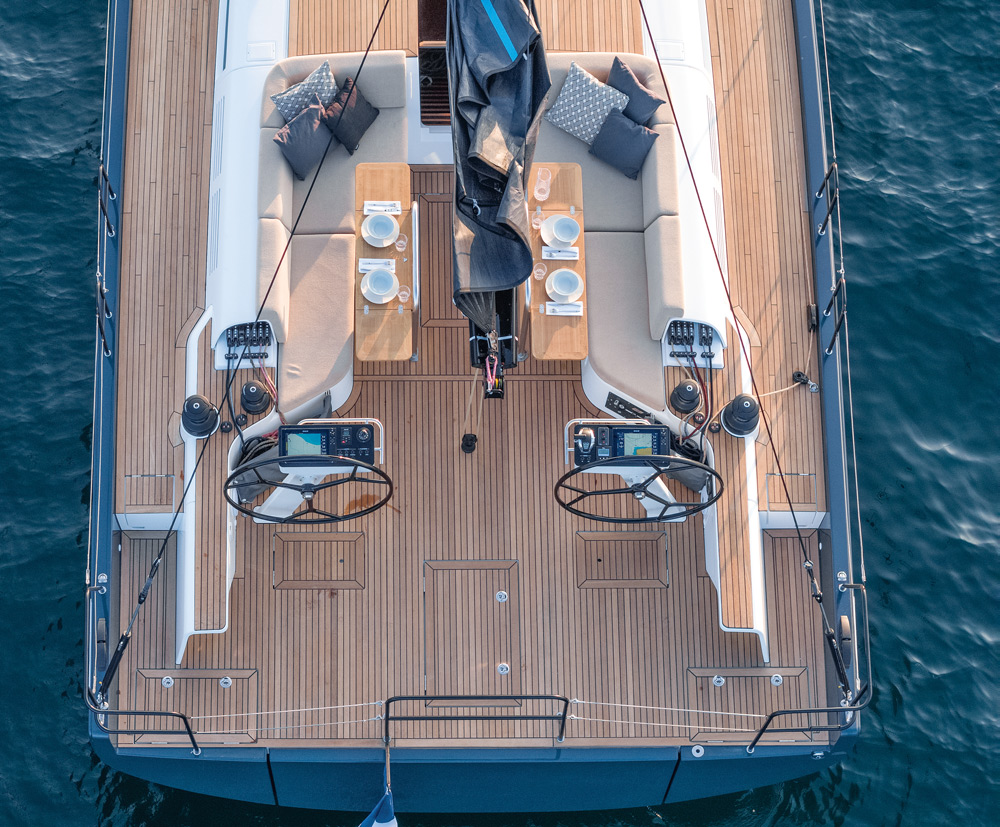Beneteau First 53
Beneteau brings back its First line of racer-cruisers with the launch of the powerful and beautiful flagship

In the late 1970s and throughout the 1980s, Beneteau First cruiser-racers were winning regattas across the world. The popularity of multipurpose boats waned over the decades, with racing and cruising boats diverging on different design paths. Ten years ago, Beneteau launched the First 30, and more recently brought back several small sportboats under the First brand. The company has committed to the concept once again by taking a giant step up with the launch of its flagship, the Beneteau First 53.
Beneteau spent more than two years developing the 53, launching the boat in the fall of 2019. When planning for the relaunch of its First line of racer-cruisers, the company held a competition among the world’s best designers. Roberto Biscontini of America’s Cup fame won and designed the hull, while Lorenzo Argento handled the interior and deck design. Much of the design effort focused on balancing the boat by tweaking the center of buoyancy and center of effort accurately, and Biscontini put 25 different hull shapes through computational fluid dynamic testing. The result is a handsome and powerful racer-cruiser.
I caught up with the boat after a successful U.S. Sailboat Show in Annapolis, Maryland, last fall.
The details
The First 53 is built in France, with a vacuum-infused structural inner hull liner that is bonded to a balsa-cored hull. Beneteau also incorporated a concept mainly used on superyachts by adding a welded aluminum grid system that is attached to the ring frames. The cabin sole and the interior joinery is attached to this frame, making for a light but stiff building technique.
On deck

The cockpit is expansive, with 16 feet 5 inches of beam to work with. Beneteau eliminated the centerline cockpit table, instead opting for twin folding tables port and starboard that are mounted on stainless grabrails, which make convenient and safe handholds for transiting from the companionway to the helm. The cockpit sole has several hatches for access to the dinghy garage, the steering cables and a dedicated life raft locker.
Beneteau didn’t skimp when it came to hardware and fixtures, with Harken supplying the hardware, including Magic Blocks, mast slides and winches, both electric and standard. Surprisingly, there is no mainsheet traveler. Rather, the mainsheet is led to a fixed block in the center of the cockpit sole, and then is rigged German style to run to winches at the helm. There is an option for a mainsheet pod with a fixed winch that can be installed in the middle of the cockpit. The grabrails, stanchions and pulpit are made of sharp-looking black lacquered stainless, and the pushpit has the added safety of being waist high. Lifelines are Dyneema.
It was easy to move across the wide open deck, and the teak decking felt sure under foot. (Teak decks come standard in the cockpit but are an option on the side decks and foredeck.) There are fittings in the deck to rig a dodger. The fixed bowsprit with bobstay not only keeps the anchor gear out away from the plumb stem, but it provides a tack point for off-the-wind sails that are key to the boat’s power. The under-deck jib roller-furler keeps things sleek.

Comments